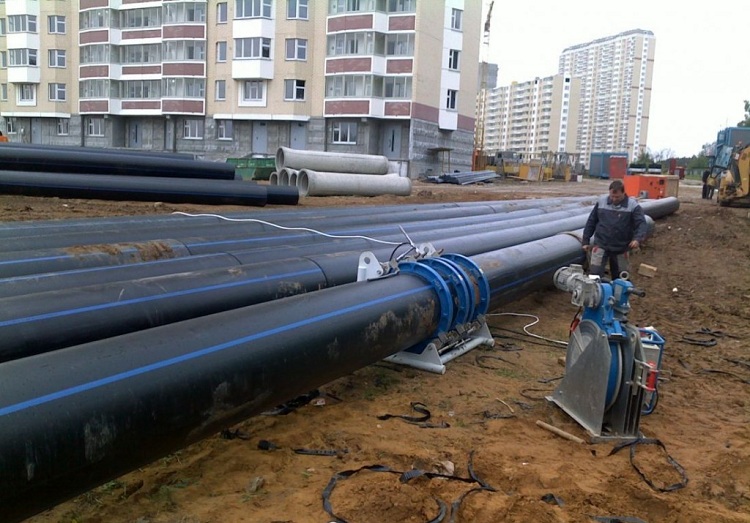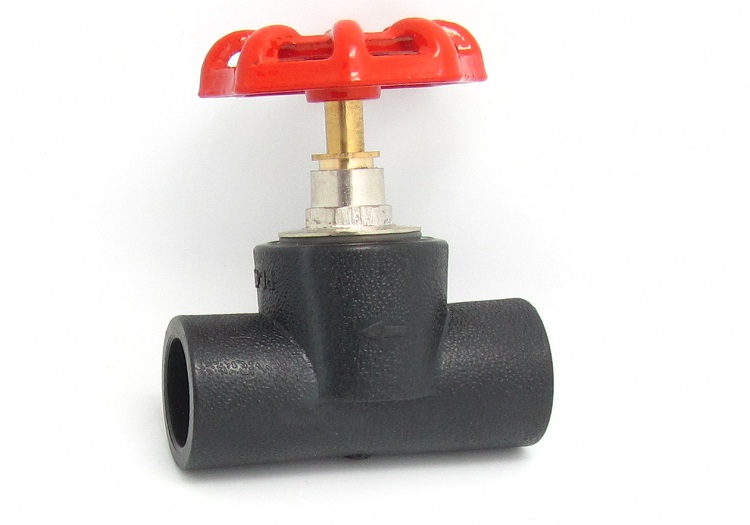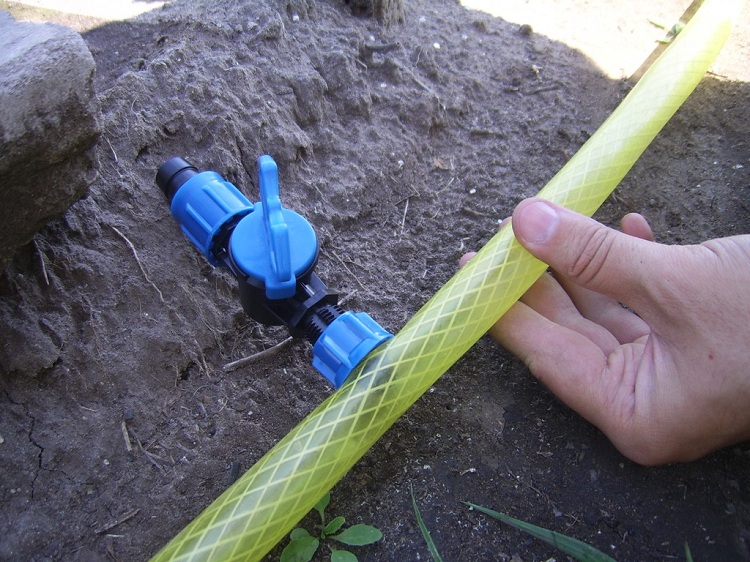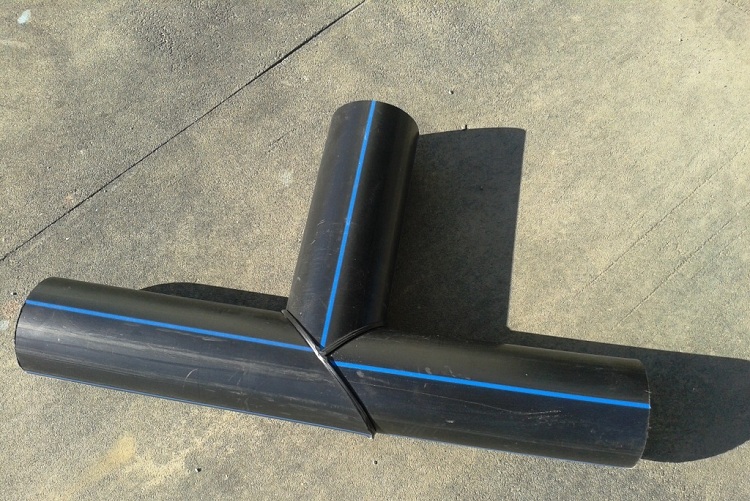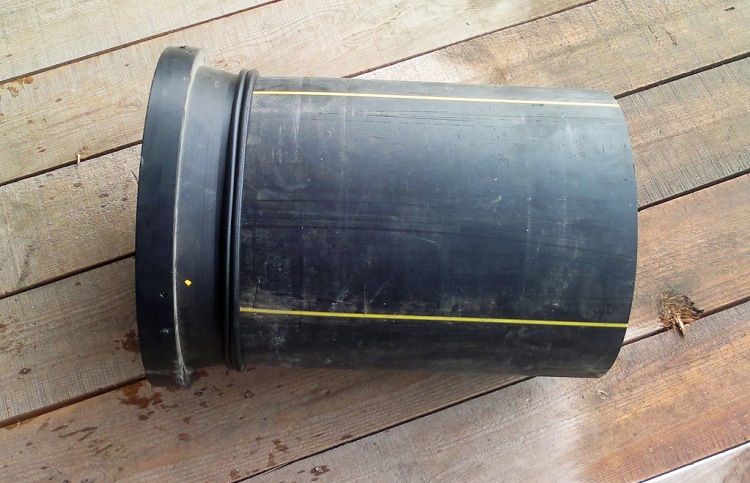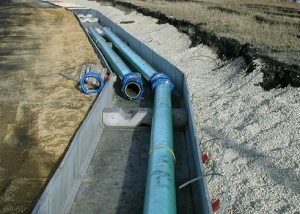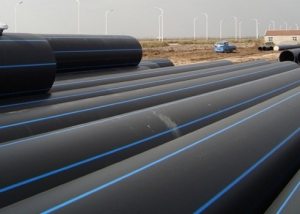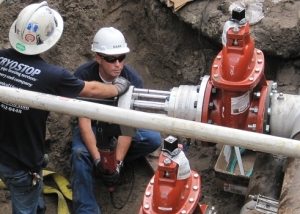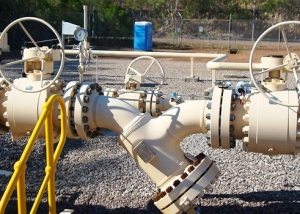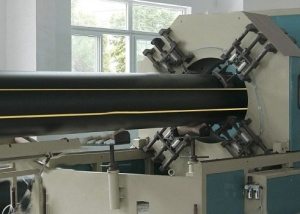Polyethylene pipes are incredibly popular today. They are used for installation of various communications and are characterized by high operational characteristics. When laying polyethylene pipelines, various factors should be taken into account, including: the type of medium being transported, the use of compatible shut-off and control valves and fittings.
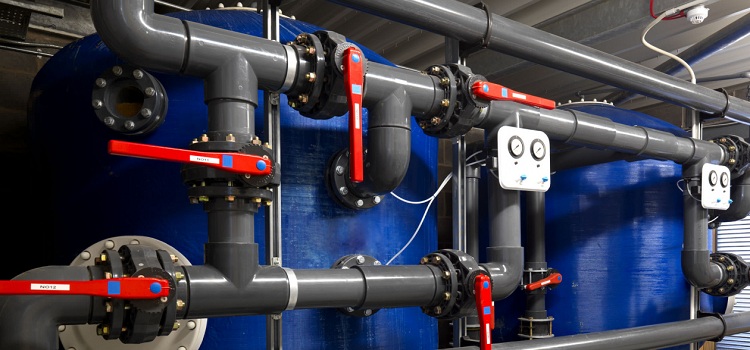
In pipelines assembled from polyethylene pipes, shut-off and control valves and fittings from the same material can be used
Content
Features of polyethylene pipelines
Communications made of polyethylene, including low-pressure polyethylene (HDPE), are used in various industries and differ in the following characteristics:
- The main advantage of polyethylene products is resistance to corrosion. In addition, parts from this material are resistant to aggressive chemicals, however, in this case, care must be taken to install suitable shut-off and control valves (ball valves for HDPE pipes);
- the operational period of polyethylene communication can reach 50 years, and in some cases even more;
Note! Structures made of this material are quite easy to maintain, so user costs are minimized.
- the smoothness of the inner walls does not interfere with the transportation of the working medium, which is also an indisputable advantage, as the communication bandwidth is a very important parameter;
- the ease of polyethylene parts contributes to simple and quick installation;
In addition, communications made of this material are characterized by low thermal conductivity, which helps to minimize heat loss in the system. Low thermal conductivity of the material is especially relevant for pipelines transporting hot water.
For the installation of polyethylene communication, it is necessary to know which shut-off and control valves are used in such structures.
Features of ball PND cranes
Previously, quite inconvenient and bulky valves and gates were used in pipelines. Today, the development of industrial technologies allows the production of shut-off and control valves from modern materials, which, moreover, differs in its principle of operation.
PND ball valve is a device that is used in polyethylene communications and performs a locking and regulating function. Installation of such a device is carried out by welding or using special PND flanges.
The structural elements of the ball valve, move around its axis, regulating the flow of the working medium. Almost all polyethylene pipelines include PND ball valves. Consider the main advantages of ball valves:
- the design of the ball valve is simple to perform and highly efficient;
- spherical models of cranes perfectly cope with the locking function, providing high sealing performance;
- the price of a ball device is lower than that of standard gate valves;
- such devices are easy to install and maintain.
The disadvantages of these devices include:
- the installation of such devices is limited in diameter;
- during operation, the ball in the tap may for one reason or another lose its quality, which entails a loss of tightness.
Ball valve for PND pipes: varieties
There are several ways to install ball PND cranes, which are worth paying attention to. The mounting option, as a rule, depends on the design features of the product. Consider these options:
- Compression type of connection. Compression ball valve for HDPE pipes is the most popular option, which is used in communications with small cross-sectional indicators. Docking to the piping is done through a traditional crimp fitting.
- Flange connection. Such cranes are mounted on communications with large cross-sectional indicators. Installation itself is carried out using special bolts.
Note! The main advantage of a flange connection is that it is detachable.
- Weld mounted cranes. This type of connection is characterized by the highest leakage rates. To install a welded ball PND crane, welding equipment is required.
In addition, there is a separation of ball valves according to the design features of the drive mechanism:
- if the cross-sectional indicators of the pipeline are small, then a manual drive is used. To block the flow of the working medium, turn the handle.
- if the cross-section of the pipeline exceeds 150 mm, spherical devices with different drives can be used: electric drive, pneumatic drive, hydraulic drive.
Such devices are used in automated systems in which the impact on the working element of the crane is carried out by means of gearboxes. Gearboxes can have a different design, depending on the specific case.
HDPE Pipe Fittings
In addition to ball PND cranes, other elements are used in polyethylene communications, which relate to fittings for PND pipes. Reinforcement for HDPE pipes, as a rule, is selected, focusing on the diameter of the communication.
Accessories from HDPE is used most often in water communications. Such communications can be of two types:
- outdoor;
- internal.
External polyethylene pipelines are mounted mainly in a closed way (underground). Internal communications are laid directly on the premises.
Accessories for polyethylene pipes are also called “spingots”. Such shaped parts can have a diverse design and can be used for different types of HDPE pipe connections.
Consider the main types of connecting elements for HDPE pipes:
- PND plug under a flange;
- HDPE tap;
- transition;
- tee.
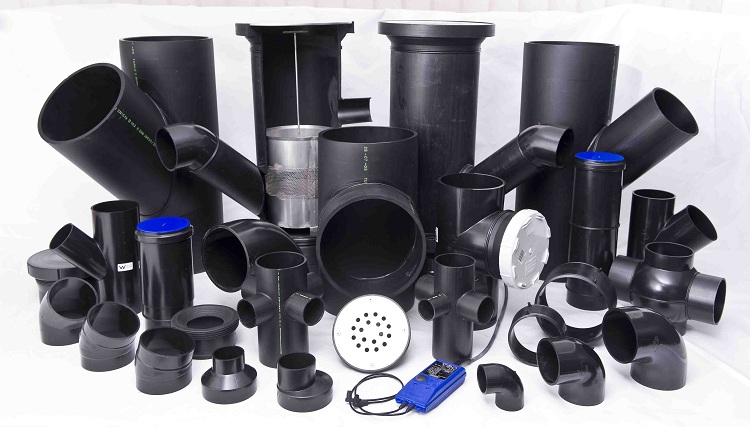
In addition to stop valves, when installing HDPE, it is necessary to use tees, bends, couplings and other types of fittings
PND branch for polyethylene pipes
PND tap for polyethylene pipes is used in those cases when it is required to change the direction of polyethylene communication. The rotation of the system can be performed at different angles, using a branch for the HDPE pipe. The most common are bends for HDPE pipes with an angle of 45 and 90 °. Less commonly used bends with angles of 15 or 60 °.
Helpful information! It is also worth noting that some companies produce non-standard shaped elements for individual orders. This allows you to expand the operational area of such a molded connecting element.
HDPE tap is made of low-pressure polyethylene - a durable and reliable material that can withstand fairly high pressure.As a rule, two grades of polyethylene are used for the production of these fittings:
- PE 80;
- PE 100.
According to their design features, these sectional elements are divided into:
- single segment;
- two-segment;
In addition, if necessary, you can order welding under the bends of other components (flanges for HDPE pipes, bushings). This is necessary in the case when you need to dock the PND outlet with a locking device.
PND tee for polyethylene pipes
Another important connecting element that is necessary when installing polyethylene communication is the HDPE tee. This shaped element is necessary in order to connect an additional branch to the main (main) pipe.
As a rule, using tees, pipes with the same cross-sectional indicators are connected. In this case, all three branches of the tee for HDPE pipes have the same diameter (equal bore tee). However, there are cases when it is necessary to joint pipes with different diameters and then mount a special adapter tee, the bends of which differ in terms of cross-section.
Consider situations when the use of such a fitting is necessary:
- laying of polyethylene multichannel communications (in production);
- installation of a water supply system in an apartment building;
- the use of one source of water for different purposes;
- creation of points for the output of the working environment from communication.
Tees are quite in demand in the case when it is necessary to perform a branch from the central highway. The HDPE tee is an effective fitting that is easy to install and easy to maintain.
The cross-sectional parameters of the tees vary from 30 to 1200 mm, which allows them to be widely used for the installation of polyethylene communications in various sectors of human life.
Sleeve for HDPE pipes
The sleeve under the flange is a type of cast fitting and is used as a transition element in the pipe-fittings connection. A sleeve is located, usually at the end of a polyethylene pipe.
The sleeve under the flange is a rather specific part and plays the role of a collar between the clamping flange element and the flange under the HDPE pipe, which is located on a steel pipe or shutoff valve. Thus, we can say that by means of a flange sleeve a transition is made from one material to another.
Today, there are two main types of bushings:
- short
- elongated.
Due to the fact that the cost of a ball valve for closed installation (underground) is much higher than the price of standard valves made of cast iron and steel, PND bushings have become very popular in laying various communications. Such bushings are especially popular when laying large-diameter pipelines.
Helpful information! A sleeve for a polyethylene pipe can significantly reduce the cost of installing the system as a whole.
Shut-off and control valves, as well as molded fittings for polyethylene pipes, can significantly simplify the installation of pipelines, and also effectively cope with the tasks assigned to them. Such devices are virtually maintenance-free and can last for many years under normal operating conditions.
